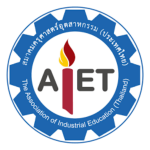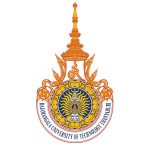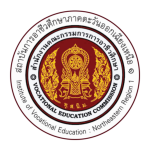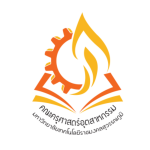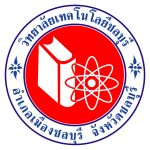Aviator The Ultimate Guide to Aviation Essentials
- Aviator: The Ultimate Guide to Aviation Essentials
- The History of Aviation
- Early Innovations
- Regulatory Framework
- Types of Aircraft
- Fixed-Wing Aircraft
- Rotary-Wing Aircraft
- Skills Required for Aviators
- Technical Abilities
- Decision-Making and Leadership
- The Future of Aviation
- Sustainability Initiatives
- The Role of Technology
- Conclusion
Aviator: The Ultimate Guide to Aviation Essentials
Aviation has always captivated the human imagination, representing a blend of technology, adventure, and the pursuit of freedom. The term aviator signifies not just someone who operates an aircraft but embodies the spirit of exploration, pushing boundaries and mastering the skies. This guide serves as a comprehensive resource, offering insights into various aspects of aviation—from historical milestones to modern advancements and the essential skills required to excel as an aviator. Whether you are a passionate aviation enthusiast or someone considering a career in flying, understanding the nuances of this field is crucial.
The aviation industry has evolved significantly since the Wright brothers took their pioneering flight over a century ago. Today, advancements in aerodynamics, engineering, and technology have transformed the way we travel and explore the skies. Moreover, the role of an aviator has expanded, encompassing various types of flying, from commercial piloting to military operations and recreational flying. Each of these fields demands unique skills, knowledge, and training.
In this guide, we will explore the essential components of aviation, including the types of aircraft, the regulations governing flight, and the critical skills necessary for an aviator. We will also delve into the technological advancements that are shaping the future of aviation and the environmental considerations that pilots must keep in mind. By the end of this article, you will have a clearer understanding of what it means to be an aviator in today’s world.
Aviation is not just a profession; it is a lifestyle marked by dedication, continuous learning, and a love for flight. The vast array of careers and opportunities available in this field means that aspiring aviators have numerous paths to choose from, each offering its unique rewards and challenges. Throughout this guide, we hope to inspire and educate those drawn to the skies, highlighting the remarkable journey of becoming an aviator.
Let us now delve deeper into the heart of aviation, exploring its history, the essentials of aircraft, and the diverse roles aviators play in our world.
The History of Aviation
The history of aviation is a fascinating chronicle that begins in the early 20th century with a series of groundbreaking experiments and developments. The Wright brothers’ historic flight in 1903 marked the beginning of powered flight, establishing the foundation for modern aviation. Over the subsequent decades, innovations such as the development of jet engines and advancements in aerodynamics transformed what was once a daring venture into a highly regulated and efficient industry.
Various milestones have defined the journey of aviation, leading to the establishment of commercial airlines after World War II, greatly influencing global travel patterns and trade. Aviation history is filled with remarkable figures, such as Amelia Earhart, who broke barriers in female flying, and Charles Lindbergh, who made the first solo nonstop transatlantic flight. Understanding these historical developments provides context for the many technological advancements that have shaped the aviation landscape today.
| 1903 | First powered flight by the Wright brothers |
| 1947 | Chuck Yeager breaks the sound barrier |
| 1969 | First flight of the Boeing 747 |
| 2007 | Introduction of the Airbus A380 |
Early Innovations
In the early stages of aviation, inventors experimented with different designs and flight methods, but it was only with the Wright brothers that sustained, powered flight became a reality. Following their success, many others sought to improve on the basic design, leading to innovations such as the biplane and monoplane configurations, which offered enhanced stability and performance. Aviation pioneers like Glenn Curtiss and Louis Blériot contributed significantly to these developments, paving the way for more advanced aircraft.
The introduction of the metal airframe during World War I represented another crucial transformation, allowing designers to create stronger and lighter aircraft capable of greater speeds and longer distances. Following the war, the aviation industry began to flourish as aircraft became a viable means of transport, leading to the establishment of commercial aviation.
Understanding the historical context of aviation provides aspiring aviators with an appreciation of the challenges and triumphs that have shaped the industry. These historical innovations highlight how far aviation has come and serve as inspiration for future advancements.
Regulatory Framework
As the aviation industry expanded, so did the need for regulations to ensure safety and efficiency. Governing bodies, such as the Federal Aviation Administration (FAA) in the United States and the International Civil Aviation Organization (ICAO) globally, were established to oversee aviation practices, set safety standards, and facilitate international cooperation.
These regulations address various aspects of aviation, including pilot certification, aircraft maintenance, air traffic control procedures, and environmental concerns. Compliance with these regulations is vital for ensuring the safety of aviators and passengers alike. Aspiring aviators must familiarize themselves with these regulations, as they form the backbone of professional flying.
The regulatory environment also impacts the development of new technologies and the operations of airlines, making it essential for all aviation professionals to understand the implications of policies and rules within the industry.
Types of Aircraft
One of the essential aspects of being an aviator is knowing the various types of aircraft operated within the aviation sector. Aircraft can be categorized based on several factors, including their design, purpose, and capabilities. Understanding these distinctions is crucial for anyone looking to pursue a career as an aviator.
There are several main categories of aircraft, including fixed-wing airplanes, rotorcraft (helicopters), gliders, and unmanned aerial vehicles (UAVs or drones). Each aircraft type serves specific purposes, from commercial passenger transport to military operations and aerial photography. Furthermore, within these categories, there exist numerous subtypes with unique features tailored to specialized missions.
- Fixed-wing airplanes: Ideal for commercial and cargo transport.
- Rotorcraft: Offer vertical takeoff and landing capabilities.
- Gliders: Operate without engines, relying on thermals and currents.
- UAVs: Used for surveillance and data collection.
Fixed-Wing Aircraft
Fixed-wing airplanes are perhaps the most recognizable aircraft type, characterized by wings that do not move. These planes rely on their engine thrust and aerodynamic lift generated by their shape to maintain flight. Fixed-wing aircraft come in various configurations and sizes, from small private planes to large jets used by commercial airlines.
Learning to fly fixed-wing aircraft involves understanding aerodynamics, flight controls, and navigational procedures. Training for this aircraft type typically includes ground school instruction, flight simulations, and actual flight training with a certified instructor. The path to becoming a fixed-wing aviator requires dedication, focus, and a passion for flying.
The versatility of fixed-wing aircraft makes them suitable for a variety of missions, including cargo transport, passenger travel, military operations, and even agricultural work. This versatility presents numerous opportunities for aspiring aviators looking to specialize in different fields of aviation.
Rotary-Wing Aircraft
Rotary-wing aircraft, commonly known as helicopters, differ significantly from fixed-wing aircraft in their design and flight mechanics. Helicopters use rotating blades to generate lift and thrust, enabling them to hover, ascend, and descend vertically. This capability makes helicopters invaluable for missions in environments with limited space for takeoff and landing.
Becoming a helicopter pilot involves a unique set of training requirements and challenges. Pilots must learn to control the aircraft’s movements in a way that is different from fixed-wing flying, particularly in terms of managing the helicopter’s hover and transition between vertical and forward flight. Training generally includes a mixture of ground school and flight experience, focusing on emergency procedures, navigation, and specialized maneuvers.
Helicopters are often used in search and rescue operations, medical transport, and military applications, further illustrating the diversity of opportunities available for aspiring aviators in this field.
Skills Required for Aviators
To excel as an aviator, one needs a specific set of skills that encompass technical knowledge, decision-making, and interpersonal communication. As aviation is a multifaceted discipline, aspiring aviators should focus on honing these essential skills to enhance their effectiveness both in routine operations and during emergency situations.
Among the key skills are strong analytical abilities, proficiency in navigation, and a solid foundation in meteorology. Aviators must analyze various data inputs, such as weather conditions and aircraft performance, to make informed decisions during flights. Furthermore, communication skills are critical when interacting with air traffic control and ensuring collaboration among crew members.
- Analytical Skills: Essential for interpreting flight data and weather conditions.
- Technical Knowledge: Understanding aircraft systems and navigation.
- Communication: Clear communication with air traffic controllers and crew.
- Problem-Solving: Ability to address unforeseen challenges promptly.
Technical Abilities
Technical prowess involves not only grasping the mechanics of flight but also being able to troubleshoot various aircraft systems. Understanding aerodynamics, avionics, and navigation aids is vital for all aviators. These technical skills are developed through formal education and practical experience, enabling pilots to maintain operational awareness throughout a flight.
Aviators must also be familiar with pre-flight checks and procedures, ensuring the aircraft is in optimal condition before leaving the ground. This thorough understanding of technical processes is fundamental to enhancing safety and performance.
Overall, continuous training and practice are necessary for aviators to adjust and refine their technical skills throughout their careers, ensuring they remain competent in handling their aircraft under varying conditions.
Decision-Making and Leadership
As an aviator, decision-making is not merely about choosing when to take off or land; it encompasses a range of factors weighing on the safety and success of each flight. Strong decision-making skills enable aviators to evaluate risks, set priorities, and respond effectively to emergencies. This skill is honed through experience and often becomes second nature for seasoned pilots.
Leadership is another vital aspect of an aviator’s role. Whether serving as a captain or a first officer, one is responsible for ensuring that the crew operates cohesively while maintaining a clear focus on safety and operational objectives. Effective leadership fosters a collaborative environment that enhances overall performance and safety during flights.
The Future of Aviation
The aviation industry is ever-evolving, with technological advancements continually reshaping the landscape. Emerging trends include the development of electric and hybrid aircraft, which aim to reduce carbon emissions and operating costs. These innovations promise to transform air travel into a more sustainable endeavor, reflecting growing environmental concerns among the public and regulators.
Additionally, advancements in artificial intelligence (AI) and automation are becoming increasingly integrated within aviation operations, enhancing safety, efficiency, and predictive maintenance capabilities. Future aviators must stay informed about these trends and understand their implications for flying, safety protocols, and operational procedures.
| Electric Aircraft | Reduce emissions and operating costs |
| AI and Automation | Enhance safety and efficiency |
| Advanced Navigation Systems | Improve situational awareness and tracking |
| Virtual Reality Training | Enhance training efficiency and realism |
Sustainability Initiatives
With the rise of climate consciousness, the aviation industry has begun implementing various sustainability initiatives aimed at reducing its environmental impact. Airlines are exploring alternative fuels and maximizing efficiency to lower their carbon footprint. These measures are expected to play a necessary role in the future of aviation as regulations become stricter and public scrutiny increases.
Moreover, stakeholders in aviation, including manufacturers, airlines, and governments, are collaborating to develop comprehensive sustainability strategies that include emission reduction targets and investment in research and development of green technologies. The commitment to sustainability represents a critical shift in the industry, highlighting the importance of environmental responsibility for aviators and operators alike.
The Role of Technology
Technology continues to be a driving force within aviation, enhancing all aspects of flight. From advanced cockpit instrumentation to onboard communication systems, the integration of cutting-edge technology will shape the future landscape. Regular updates to navigational and safety equipment ensure that aviators can effectively respond to changing conditions and enhance passenger safety.
Continued investment in research and development will likely yield further advancements, paving the way for smarter, more efficient aircraft. Aspiring aviators must recognize the importance of staying up-to-date with technological advancements to remain competitive and capable in this increasingly sophisticated field.
Conclusion
Becoming an aviator is an exciting journey filled with opportunities, challenges, and a deep appreciation for the skies. This comprehensive guide has explored the history, various aircraft types, essential skills, and future trends that define the aviation landscape. As we witness remarkable advancements in aviation technology, the role of aviators remains critical in ensuring safety, efficiency, and sustainability in the industry.
The pursuit of becoming an accomplished aviator requires dedication, continuous learning, and a passion for flight. By understanding the diverse aspects of aviation and the evolving landscape, aspiring aviators can confidently embark on their journeys and contribute to the rich legacy of aviation.



